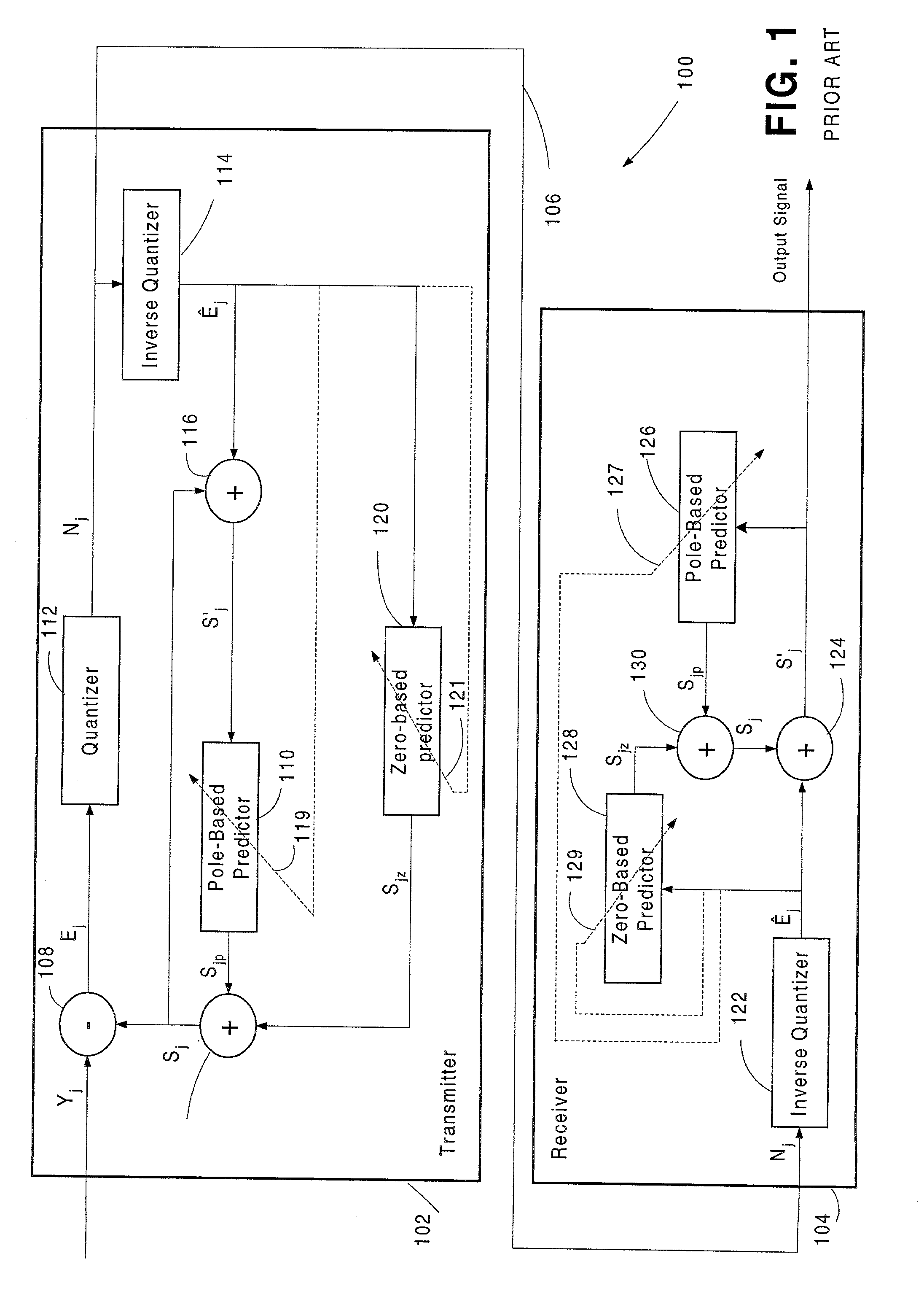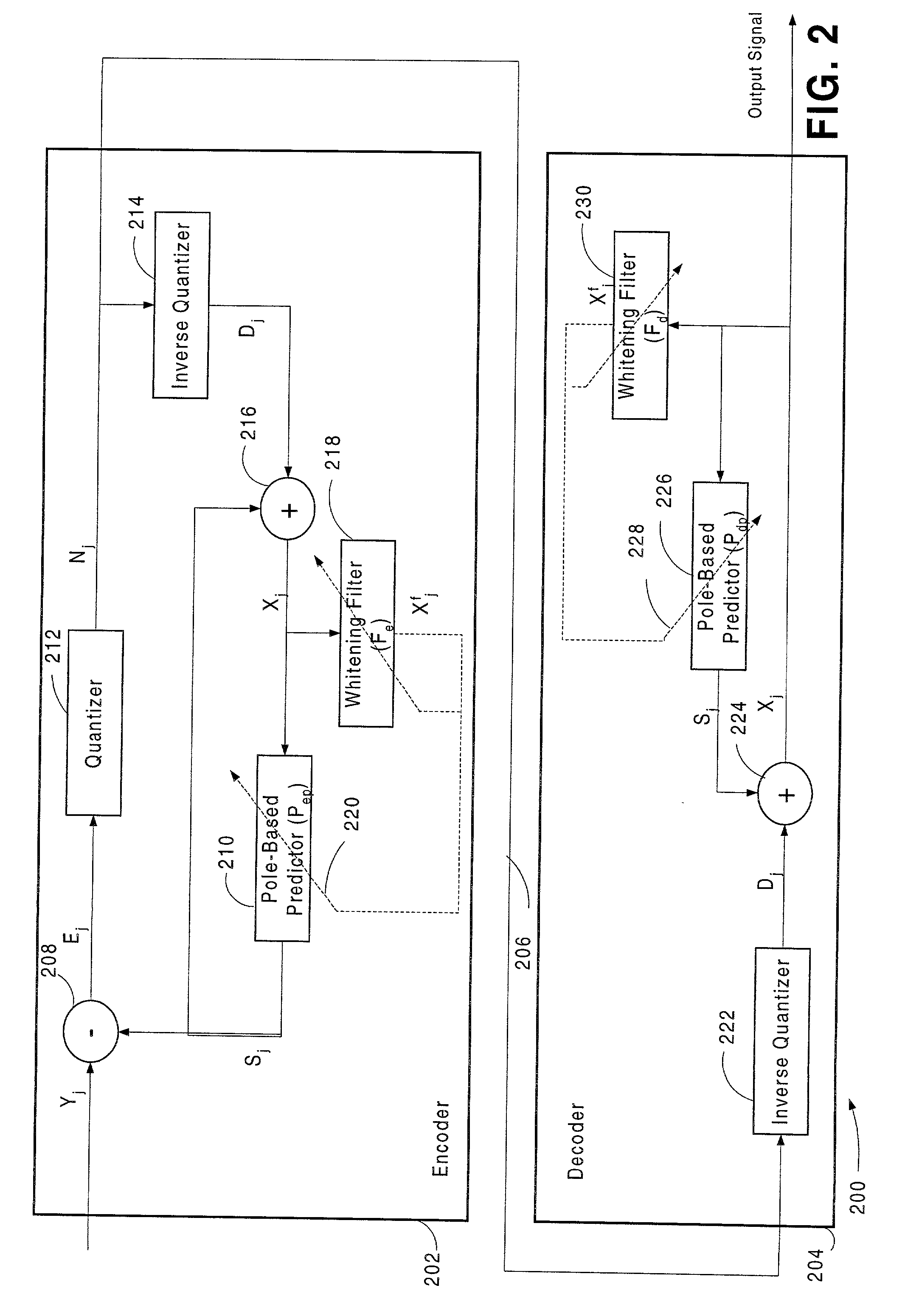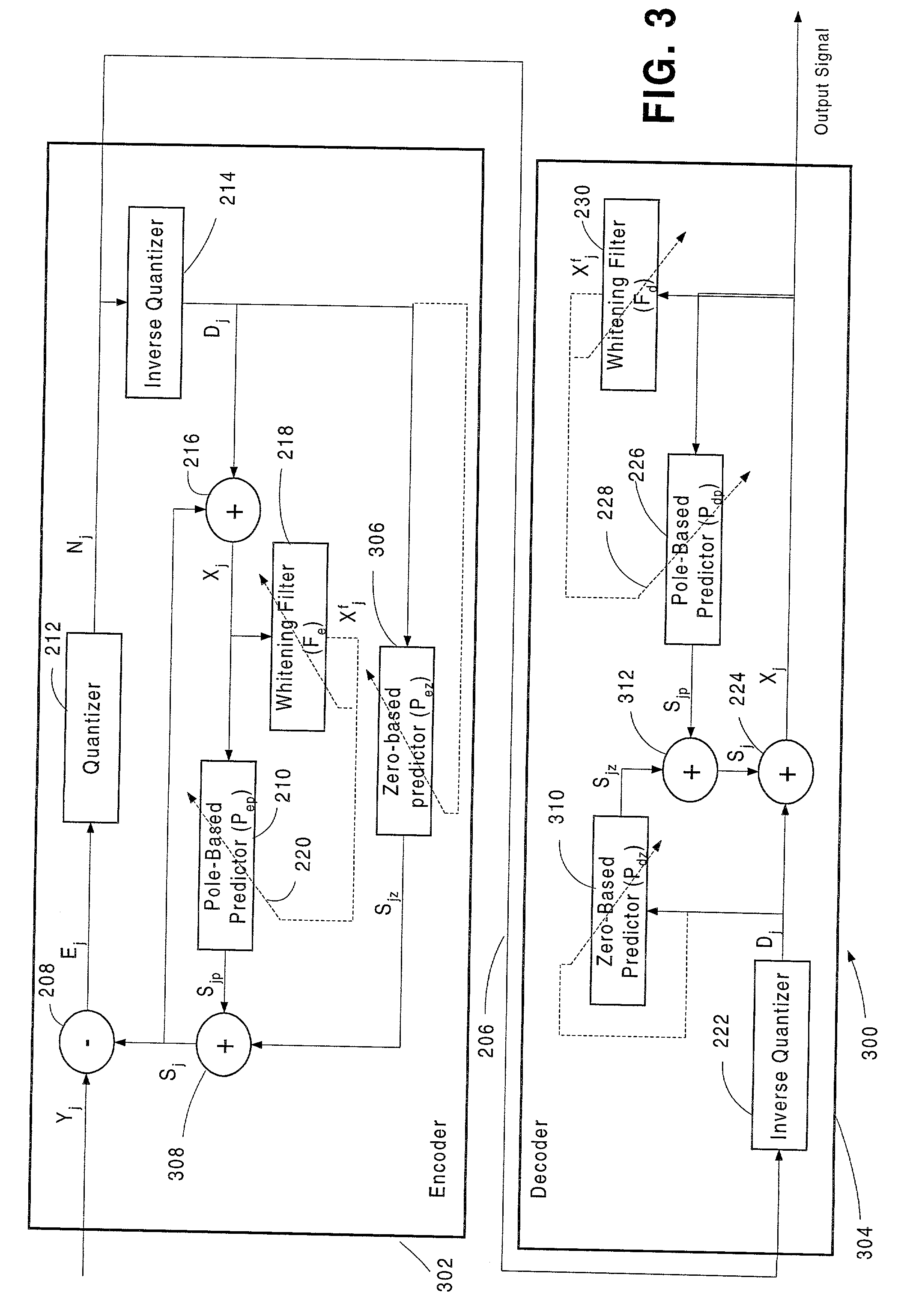Adaptive differential pulse code modulation system and method utilizing whitening filter for updating of predictor coefficients
a technology of predictor coefficient and differential pulse code, applied in the field of prediction adaptation, can solve the problems of increased complexity, distorted frequency response, and computationally expensive implementation of millar system and method
- Summary
- Abstract
- Description
- Claims
- Application Information
AI Technical Summary
Problems solved by technology
Method used
Image
Examples
Embodiment Construction
[0024] FIG. 2 depicts a first embodiment of an ADPCM system 200 in accordance with the invention. ADPCM system 200 comprises an encoder 202 and decoder 204 linked in communication by a network connection 206, such as an ISDN line, fractional T1 line, digital satellite link, wireless modems, or like digital transmission service. At encoder 202, a digitized input signal, typically representative of speech, is applied to a conventional subtractor 208. The input signal is represented as Y.sub.j, signifying a value at sample period j. Subtractor 208 derives a difference signal E.sub.j by subtracting from input signal Y.sub.j a predicted signal S.sub.j generated by a pole-based predictor 210. The difference signal E.sub.j is quantized by a conventional quantizer 212 to obtain a quantized numerical representation N.sub.j for transmission to decoder 204 over the network connection 206. Quantizer 112 is preferably of the adaptive type, but a quantizer utilizing fixed step sizes may also be u...
PUM
 Login to View More
Login to View More Abstract
Description
Claims
Application Information
 Login to View More
Login to View More - R&D
- Intellectual Property
- Life Sciences
- Materials
- Tech Scout
- Unparalleled Data Quality
- Higher Quality Content
- 60% Fewer Hallucinations
Browse by: Latest US Patents, China's latest patents, Technical Efficacy Thesaurus, Application Domain, Technology Topic, Popular Technical Reports.
© 2025 PatSnap. All rights reserved.Legal|Privacy policy|Modern Slavery Act Transparency Statement|Sitemap|About US| Contact US: help@patsnap.com



